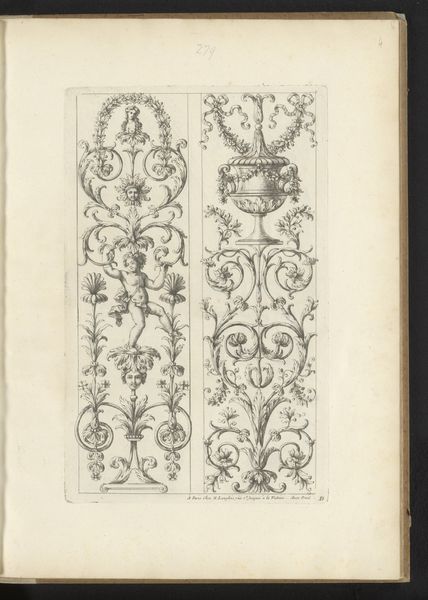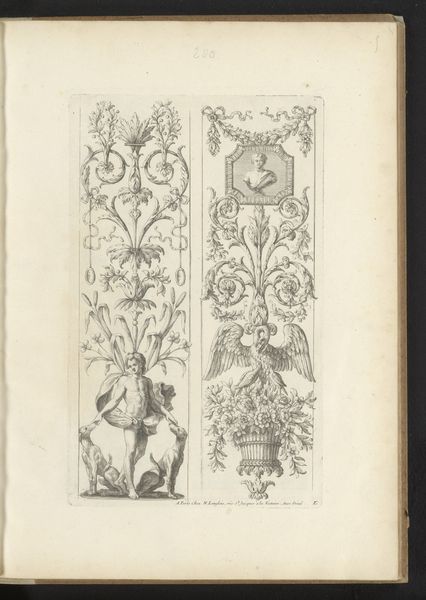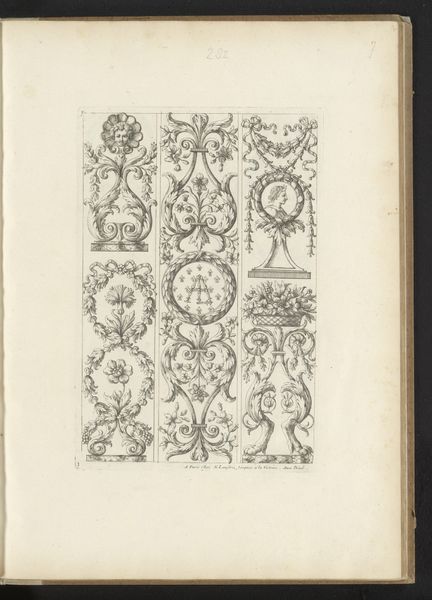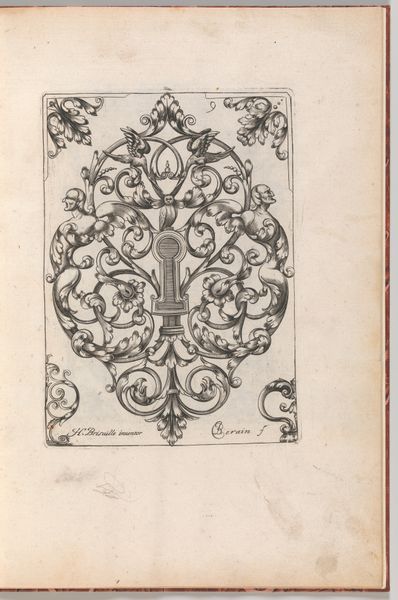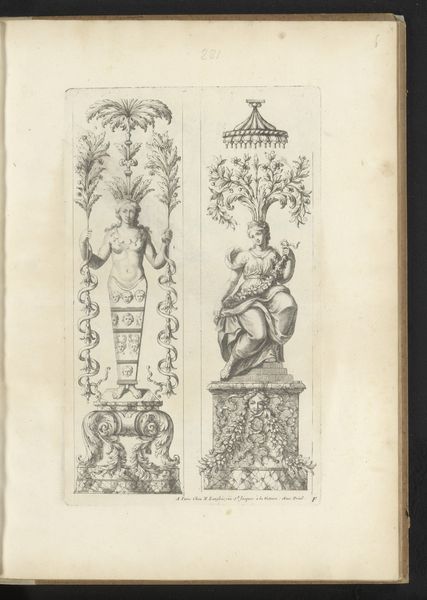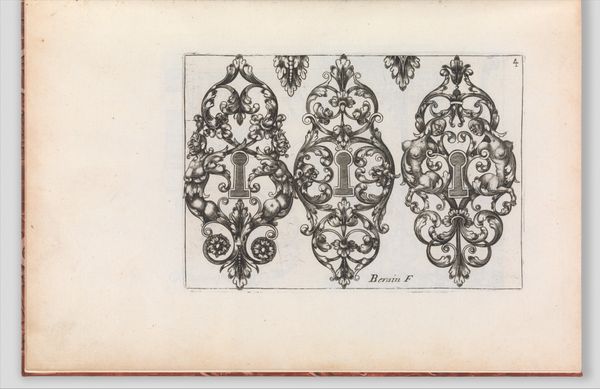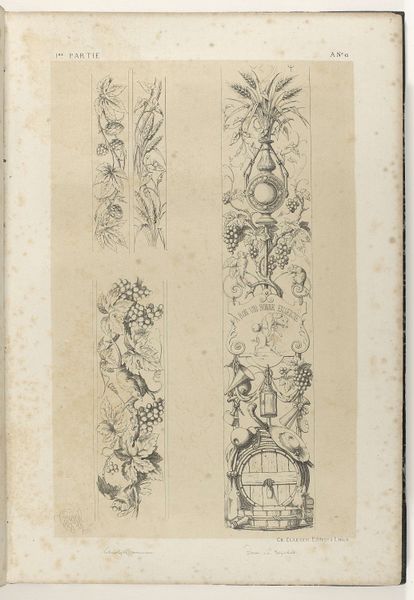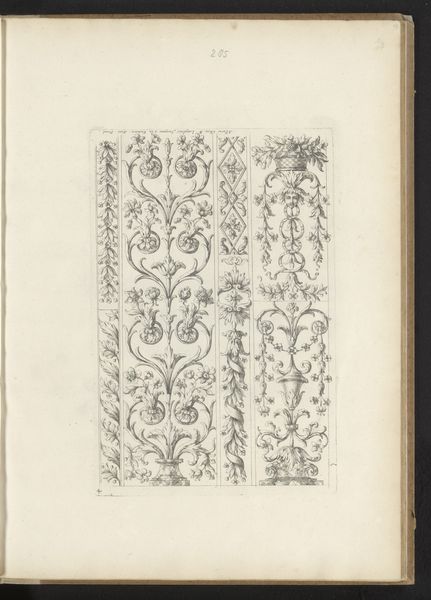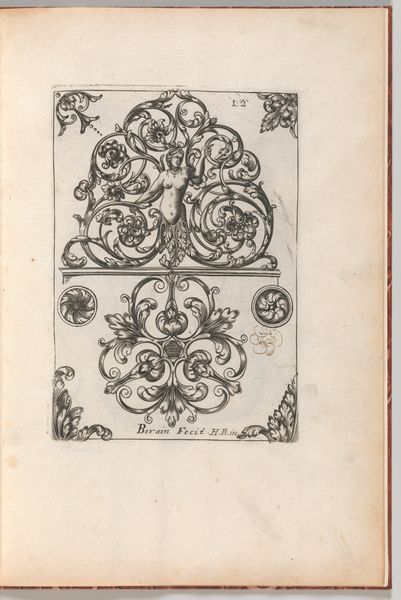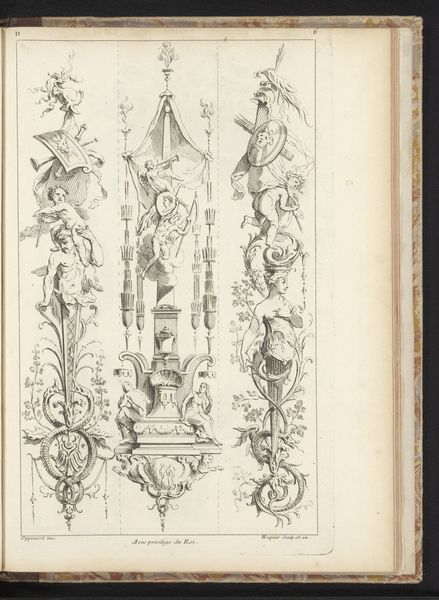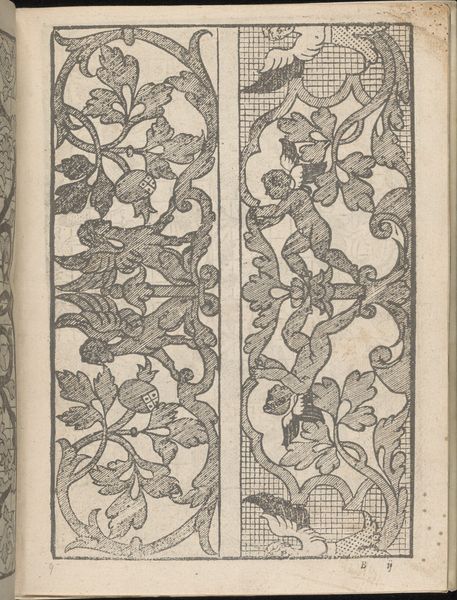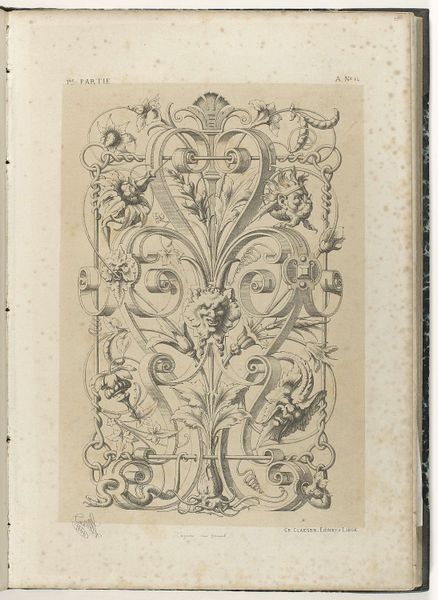
Twee panelen met een atlant en Amor met pijlenkokers 1650 - 1703
0:00
0:00
paulandrouetducerceau
Rijksmuseum
drawing, ink, pen
#
drawing
#
baroque
#
pen drawing
#
figuration
#
ink
#
pen
Dimensions: height 301 mm, width 186 mm
Copyright: Rijks Museum: Open Domain
These two panels were etched by Paul Androuet Ducerceau in the 17th century. Etching is an intaglio printmaking process, using acid to create lines in a metal plate. It's a cousin to engraving, but with a crucial difference. In etching, the plate is coated with a waxy, acid-resistant substance, and the design is scratched into this ground, exposing the metal. The plate is then immersed in acid, which bites into the exposed lines, creating grooves. The longer the plate stays in the acid, the deeper the lines. The plate is then inked, and the surface wiped clean, leaving ink only in the etched lines. Finally, it's pressed onto paper. Etching allowed for a freedom of line not possible in engraving, which required immense force. Here, the lines are light and airy, perfect for capturing the delicate ornamental designs, which would then be copied by craftsmen in other media. The relative ease of the process democratized image-making, playing a crucial role in the circulation of designs for the decorative arts.
Comments
No comments
Be the first to comment and join the conversation on the ultimate creative platform.
